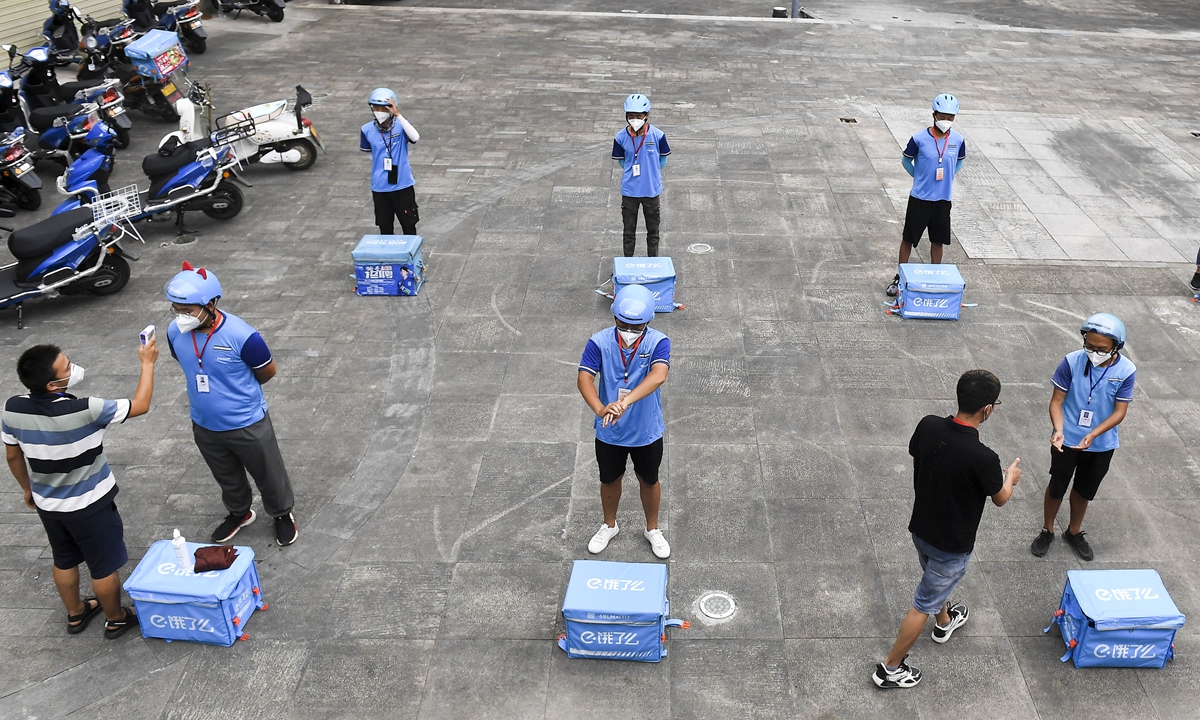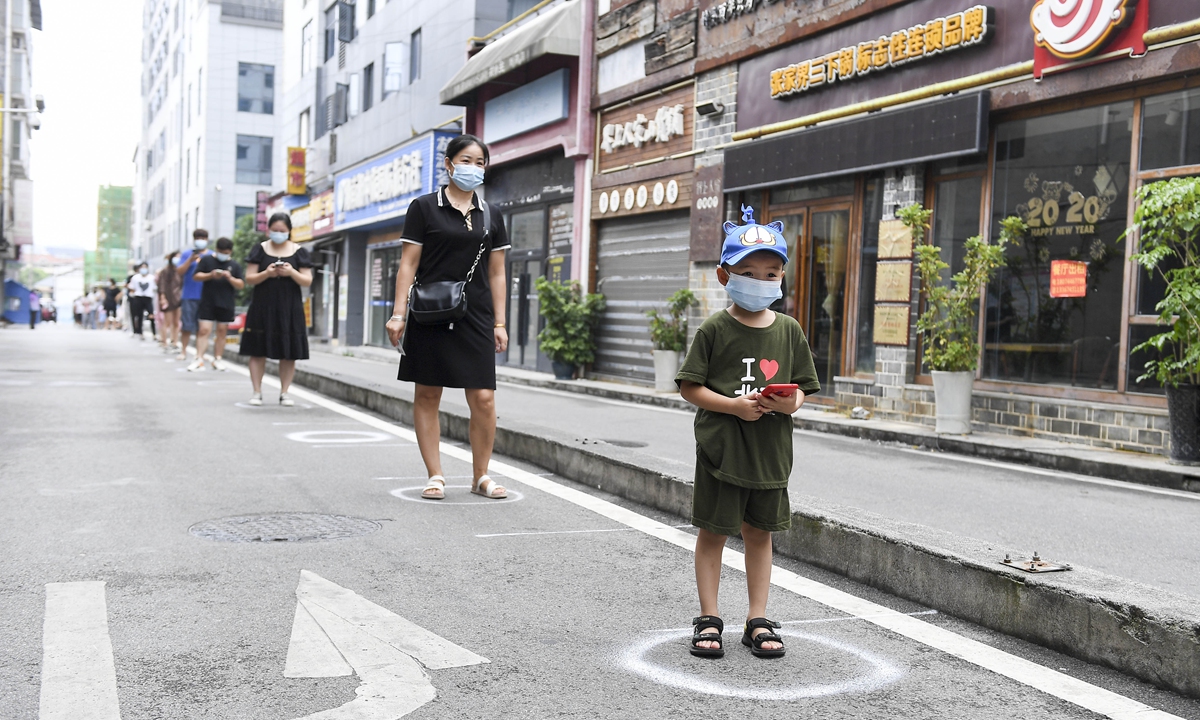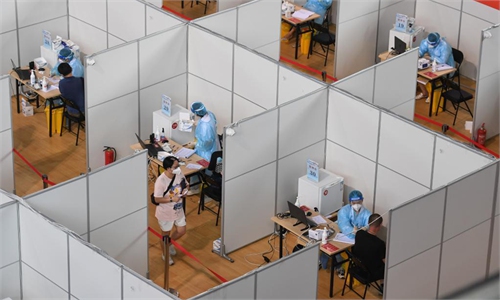COVID-19 resurgence in China sees 100 daily cases again after half year, to be controlled ‘before end of August’

Deliverymen in Zhangjiajie, Central China's Hunan Province undertake daily body temperature testing and disinfection on Monday, before they ride out to carry epidemic-related and daily living goods for local residents in quarantine. The city is among the hardest-hit regions in the latest Delta variant-related outbreak, with 10 new locally transmitted cases being reported on Monday. Photo: cnsphoto
Amid the latest COVID-19 outbreaks fueled by the Delta variant, China's locally transmitted COVID-19 cases reached 108 on Monday, the first time to exceed 100 new local cases on a single day in more than six months.
However, researchers reached by the Global Times are confident with the anti-epidemic measures, saying this wave of domestic cases is expected to be tamed by the end of August and the outbreaks won't lead to a bigger nationwide epidemic, given the strong response and expanding vaccination coverage.
Data compiled by the National Health Commission (NHC) on Tuesday showed 108 domestic confirmed cases were reported across the country on Monday alone, with 50 from East China's Jiangsu Province and 37 from Central China's Henan Province.
The last time that China recorded more than 100 new COVID-19 cases in a day was in January, when the outbreaks affected Shijiazhuang, North China's Hebei Province, and Heilongjiang and Jilin provinces in the northeast.
According to data released by the NHC on January 25, there were 117 local confirmed cases reported on the previous day.

Residents stand in "isolated circles" that are 2.5 meters apart on Tuesday, waiting to take nucleic acid tests for COVID-19, in Zhangjiajie, Central China's Hunan Province. Photo: cnsphoto
Since July 20, at least 988 infections have been detected amid the latest resurgence that began in Nanjing, Jiangsu Province and swept through more than a dozen provinces, including Hubei in Central China.Sources of infection, transmission channels and infection chains in this resurgence were already identified, so this domestic outbreak is within a controllable range, researchers from the Collaborative Innovation Center for Western Ecological Safety of Lanzhou University told the Global Times.
The Global Prediction System of COVID-19 Pandemic developed by the center indicates that this round of cases will be controlled around August 23 and the cumulative infection numbers would be 1,087-1,598, if each province is able to detect potential infections timely and curb their spread under the current level II response policy.
Controlling the epidemic means zero new confirmed infection on the day, experts said.
Zhang Yuexin, a medical expert specializing in epidemic prevention and control, told the Global Times that even though new infections exceeded 100 on Monday, it doesn't indicate a worsening situation, because most of those infections were detected among those under quarantine. The number of China's high- and medium-risk regions increased at a slower rate, he said. As of Tuesday, high-risk areas reached 15 and medium-risk areas reached 204.
Among all affected provinces, Jiangsu had the severest situation, with 642 confirmed cases since July 20, data released by Jiangsu provincial health authorities on Tuesday showed, with 394 from Yangzhou and 233 from Nanjing.
After five rounds of mass nucleic acid tests, Yangzhou reported 48 confirmed infections on Monday alone. Health authorities in Yangzhou said the city's epidemic has peaked, with more COVID-19 infections likely to be seen but at a slower pace.
Lou Yangsheng, Party chief of the Henan Provincial Committee of the Communist Party of China, urged Henan to wipe out the outbreak before the end of August, stressing stricter measures to track close contacts until all infections are found.
Since last year, China has had regional outbreaks and the country's zero-tolerance coping measures have been proven to be strong and effective. This latest wave, considered to be the most severe since Wuhan in 2020, did not undermine but provided a chance to further optimize China's anti-epidemic policy in the face of a mutated variant, Zhang said.
China's method of coping will protect the country from more threats posed by the emerging Lambda variant, which is likely to hit the Chinese border in the coming months or next year, Zhang added.



